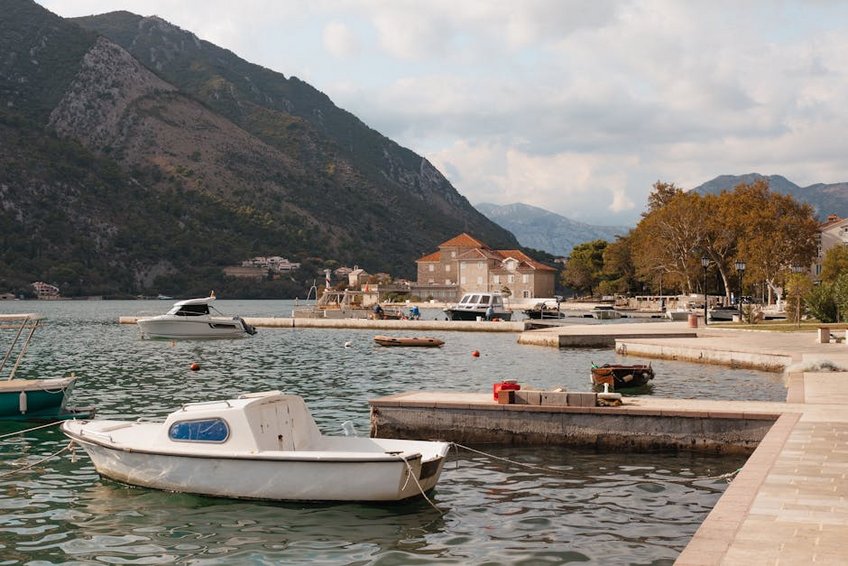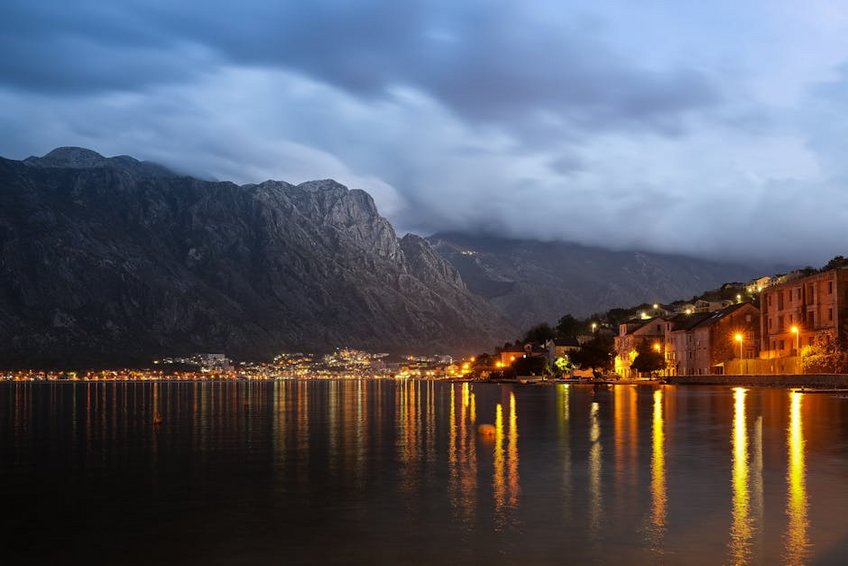Bay of Kotor: Your Ultimate Travel Guide to Montenegro’s Hidden Fjord
Imagine sailing into a breathtaking fjord where medieval walls cling to mountainsides and crystal-clear waters reflect ancient fortresses—this is the Bay of Kotor, one of Europe’s most stunning natural harbors. Nestled along Montenegro’s Adriatic coast, this UNESCO World Heritage site offers an extraordinary blend of natural beauty, rich history, and authentic Mediterranean culture that will captivate any traveler. As you explore the Bay of Kotor, you’ll discover charming coastal towns, hidden beaches, and dramatic landscapes that have attracted sailors and explorers for centuries. Whether you’re seeking relaxation, adventure, or cultural immersion, this magnificent bay provides an unforgettable experience that combines the best of coastal living with mountain grandeur. The Bay of Kotor’s unique geography creates a microclimate perfect for year-round exploration, making it an ideal destination for travelers seeking both beach relaxation and historical discovery.
Bay of Korter Essential Information – Geography and History
The Bay of Kotor, often called Europe’s southernmost fjord (though technically a ria), stretches 28 kilometers inland from the Adriatic Sea, creating four interconnected basins surrounded by imposing limestone cliffs. This dramatic landscape was formed by river erosion and tectonic activity, resulting in one of the Mediterranean’s most protected natural harbors. The bay’s strategic importance dates back to ancient times when Illyrian tribes settled here, followed by Romans, Byzantines, Venetians, and Austro-Hungarians, each leaving their architectural and cultural imprint. Today, the entire bay area enjoys UNESCO protection due to its outstanding cultural landscape and well-preserved medieval settlements. The surrounding mountains rise sharply to nearly 1,000 meters, creating spectacular vistas at every turn while providing numerous hiking opportunities with panoramic views of the water below.
Geographical Features and Climate – What Makes It Special
- The bay consists of four connected basins: Herceg Novi Bay, Tivat Bay, Risan Bay, and Kotor Bay, each with distinct characteristics and attractions
- Enjoy a Mediterranean climate with hot, dry summers (average 27°C/81°F) and mild, rainy winters, though microclimates vary throughout the bay
- Experience some of Europe’s cleanest seawater with visibility up to 35 meters, perfect for swimming and snorkeling from May through October
- Budget travelers can manage on $50-70 daily using apartments, self-catering, and public transportation with free hiking and beach activities
- Mid-range visitors should budget $100-150 daily for comfortable hotels, restaurant meals, boat tours, and museum entries
- Luxury experiences cost $250+ daily featuring waterfront villas, fine dining, private boat charters, and spa treatments
- Official Montenegro Tourism Website
- UNESCO World Heritage Site Listing
Historical Significance – Centuries of Maritime Heritage
For over two millennia, the Bay of Kotor has served as a crucial maritime center, with its natural protection making it an ideal harbor for various civilizations. Venetian influence remains most visible in the architecture of Kotor and Perast, where beautiful palaces and churches display distinctive Gothic and Renaissance styles. The region developed a unique maritime tradition, producing skilled captains and sailors who served in various European navies. Numerous naval battles occurred in these waters, particularly between Venetian and Ottoman forces, while the well-preserved fortification systems testify to the area’s strategic military importance. This rich history creates a fascinating cultural tapestry that enhances any visit to the bay.

Bay of Kotor Planning Your Trip – Seasons and Budget
Planning your Bay of Kotor adventure requires considering seasonal variations that dramatically affect both experience and cost. The summer months (June-August) offer ideal swimming conditions but bring crowds and higher prices, while spring and autumn provide pleasant weather with fewer visitors at more reasonable rates. Winter visits appeal to those seeking solitude and cultural immersion, though some water activities become limited. Your budget should account for accommodation, which ranges from budget apartments to luxury hotels, plus dining, transportation, and activity costs. Most visitors find the Bay of Kotor offers excellent value compared to other Mediterranean destinations, with high-quality experiences available at various price points. Advance booking becomes essential during peak season, particularly for popular accommodations and guided tours.
Best Time to Visit Bay of Kotor
For ideal weather and swimming conditions, visit between May and September when water temperatures reach 22-26°C (72-79°F) and sunshine is abundant. July and August offer the warmest weather but also the largest crowds, while May, June, and September provide a perfect balance of good weather and manageable tourism. Shoulder seasons (April and October) appeal to hikers and culture seekers who prefer cooler exploring temperatures and significantly fewer visitors. Winter months (November-March) see occasional rain but offer the most authentic local experience with dramatically lower prices, though some restaurants and attractions may have reduced hours. Regardless of when you visit, the bay’s stunning scenery remains breathtaking year-round.
Budget Planning and Costs
Essential Preparation Checklist
Before visiting the Bay of Kotor, ensure you have valid travel documents—US and EU passport holders can enter Montenegro visa-free for up to 90 days. Pack comfortable walking shoes for exploring cobblestone streets and hiking trails, plus swimwear, sunscreen, and light layers for variable coastal weather. Arrange travel insurance covering medical emergencies and potential trip interruptions, and notify your bank of international travel to avoid card issues. Download offline maps since mobile reception can be spotty in mountainous areas, and learn basic Montenegrin phrases though English is widely spoken in tourist areas. Finally, research ferry schedules and car rental options if planning to explore beyond the immediate bay area.
Bay of Kotor Top Attractions and Activities – Must-See Experiences
The Bay of Kotor offers an incredible diversity of attractions ranging from medieval architecture to natural wonders, ensuring every traveler finds experiences matching their interests. History enthusiasts will marvel at well-preserved fortifications and ancient churches, while nature lovers can explore numerous hiking trails with breathtaking viewpoints over the bay. Water activities dominate during summer months, with swimming, kayaking, and boat tours providing perfect ways to experience the coastline from different perspectives. Each town around the bay possesses its unique character and attractions, from Kotor’s magnificent old town to Perast’s elegant palaces and Herceg Novi’s lush gardens. Whether you prefer active exploration or relaxed contemplation, the bay’s attractions create lasting memories of this extraordinary destination.
Must-See Highlights – Cultural and Natural Wonders
No visit to the Bay of Kotor is complete without exploring Kotor’s magnificent Old Town, a maze of marble streets surrounded by massive defensive walls that climb the mountainside. The climb to San Giovanni Fortress rewards with unparalleled views of the bay, though the 1,350-step ascent requires good fitness. In Perast, visit the picturesque Our Lady of the Rocks islet with its fascinating museum and church, accessible by regular water taxis. Nature enthusiasts shouldn’t miss the Lovćen National Park, offering spectacular hiking trails and the Njegoš Mausoleum with panoramic views. Boat tours around the entire bay provide perspective on its scale and beauty, often including stops at hidden caves and beaches inaccessible by land.
Hidden Gems and Local Favorites
Beyond the main attractions, discover the Bay of Kotor’s hidden gems starting with the abandoned village of Gornji Stoliv, offering haunting beauty and incredible photography opportunities. Locals favor the secluded beaches near Rose, accessible only by boat or challenging trails but rewarding with crystal-clear water and complete tranquility. The village of Prčanj features beautiful architecture without the crowds of Kotor, plus excellent waterfront dining options. For unique perspectives, hike the abandoned fortresses above Kotor or take the road to Krstac pass for breathtaking aerial views of the entire bay. Evening kayaking tours provide magical experiences as lights reflect off the calm waters, creating unforgettable memories of this special place.
Bay of Kotor Practical Travel Information – Transportation and Accommodation
Navigating the Bay of Kotor requires understanding the transportation options available, with each method offering different advantages depending on your itinerary. The bay’s circular road connects all major towns but can become congested during peak season, making water transportation an attractive alternative. Accommodation ranges from historic old town apartments to modern beach resorts, with pricing varying significantly by location and season. Most visitors find basing themselves in Kotor, Perast, or Tivat provides optimal access to attractions while offering good dining and nightlife options. Regardless of where you stay, the compact nature of the bay ensures easy exploration of all areas, whether by car, bus, boat, or even bicycle along the relatively flat coastal roads.
| Accommodation Type | Features and Locations | Price Range (USD per night) |
|---|---|---|
| Old Town Apartments | Historic buildings in Kotor and Perast with character but limited parking | $60-120 |
| Waterfront Hotels | Modern facilities in Tivat and Herceg Novi with private beaches and pools | $100-250 |
| Luxury Villas | Private properties with stunning views, often with pools and gardens | $300-600+ |
| Guesthouses | Family-run accommodations in smaller villages offering authentic experiences | $40-80 |


